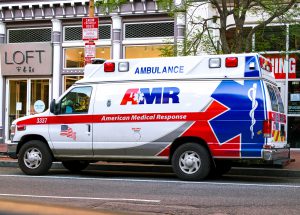Transportation can become one of the most critical responsibilities for family caregivers. About 40 percent of caregivers spend a minimum of five hours every week providing or arranging transport, consistent with a 2018 survey from the National Aging and Disability Transportation Center (NADTC), a program administered by n4a and Easterseals that promotes accessible transit. Providing transportation isn’t always easy or convenient.
Finding alternatives for times you cannot get your beloved where they have to travel will likely require some research. But a spread of options is available, which will lessen the burden on caregivers and help older and disabled people keep appointments and stay well-connected.
[lwptoc]
When You Can’t Provide A Ride
Metropolitan areas tend to be senior care transportation, with a public bus, rail or trolley lines, and various commercial options. You would possibly need to believe pre-booked “demand response” services or volunteer organizations in small towns and rural regions.
Public Transit
Primarily bus and rail services, operated and financed by federal, state, and native governments, with fixed routes and set schedules, these systems usually offer discounted fares for older adults and other people with disabilities. Vouchers could also be available.
Some senior transit agencies and native aging or disability organizations provide free training to help riders learn to travel safely.
Demand Response
Sometimes called Dial-a-Ride, demand response is another senior ride service, carrying multiple passengers who book individually with different pickup points and destinations. Reservations usually must be made a minimum of 24 hours beforehand, online, or by phone.
Taxis
Some communities require locally licensed taxi fleets to incorporate accessible vehicles. They also may offer taxi vouchers to older and disabled riders.
Ride-hailing
Ride-hailing companies like Lyft and Uber connect passengers with drivers who provide point-to-point transportation in their vehicles. Booking and payment are made via websites or mobile apps.
Non-emergency medical transportation
Non-emergency medical transportation may be a Medicaid benefit that covers visit medical appointments. Private insurance, including some Medicare Advantage plans, also may cover non-emergency medical transit; ask your provider. Still, a growing number of insurers and state Medicaid programs are covering Lyft and Uber rides.
How To Find Transit Options

Transportation information rarely comes from one go-to source, although emerging strategies publicly transit to fill that gap. Some local and regional transit organizations have developed “one-call/one-click” centers or “mobility management” programs to assist people in quickly find, assess, and even book transportation services online or by phone. Caregiver support programs, elder care transportation, welfare work agencies, and family and friends can also be adequate resources.
Here are some ways to start your search:
Use The Eldercare Locator
The website, operated by the federal government’s Administration for Community Living, can direct you to the closest Area Agency on Aging for information and referrals on transit options. you’ll also access the Elder Care transportation services Locator by phone at 800-677-1116.
Find A Mobility Manager
Mobility managers work with communities to develop coordinated transportation programs and help individual customers, significantly older, disabled, and low-income people navigate the range of transit options in their area.
Your local transportation system agency, Area Agency on Aging or Center for Independent Living (CIL) can connect you with a mobility manager if one serves your area.
Dial 211
The 211 phone code is reserved for callers to urge information and referrals for health care services in their community, including transportation and other support for older and disabled Americans. The 211 use comprises 50 states, Puerto Rico, and, therefore, the District of Columbia and reaches 94.6 percent of the U.S. population. United Way chapters operate and finance most call centers. you’ll get more information on 211 and find your local service at 211.org.
